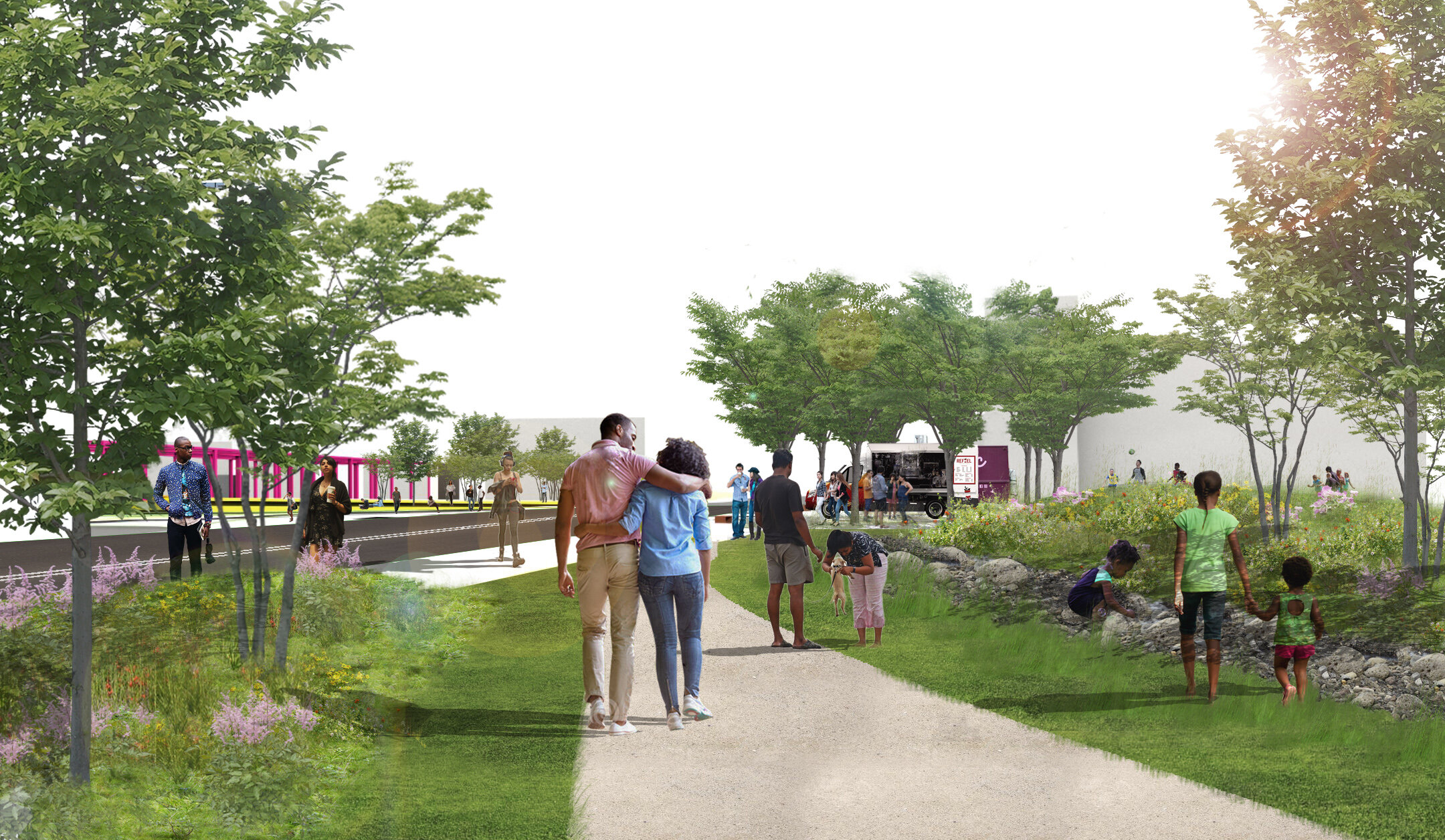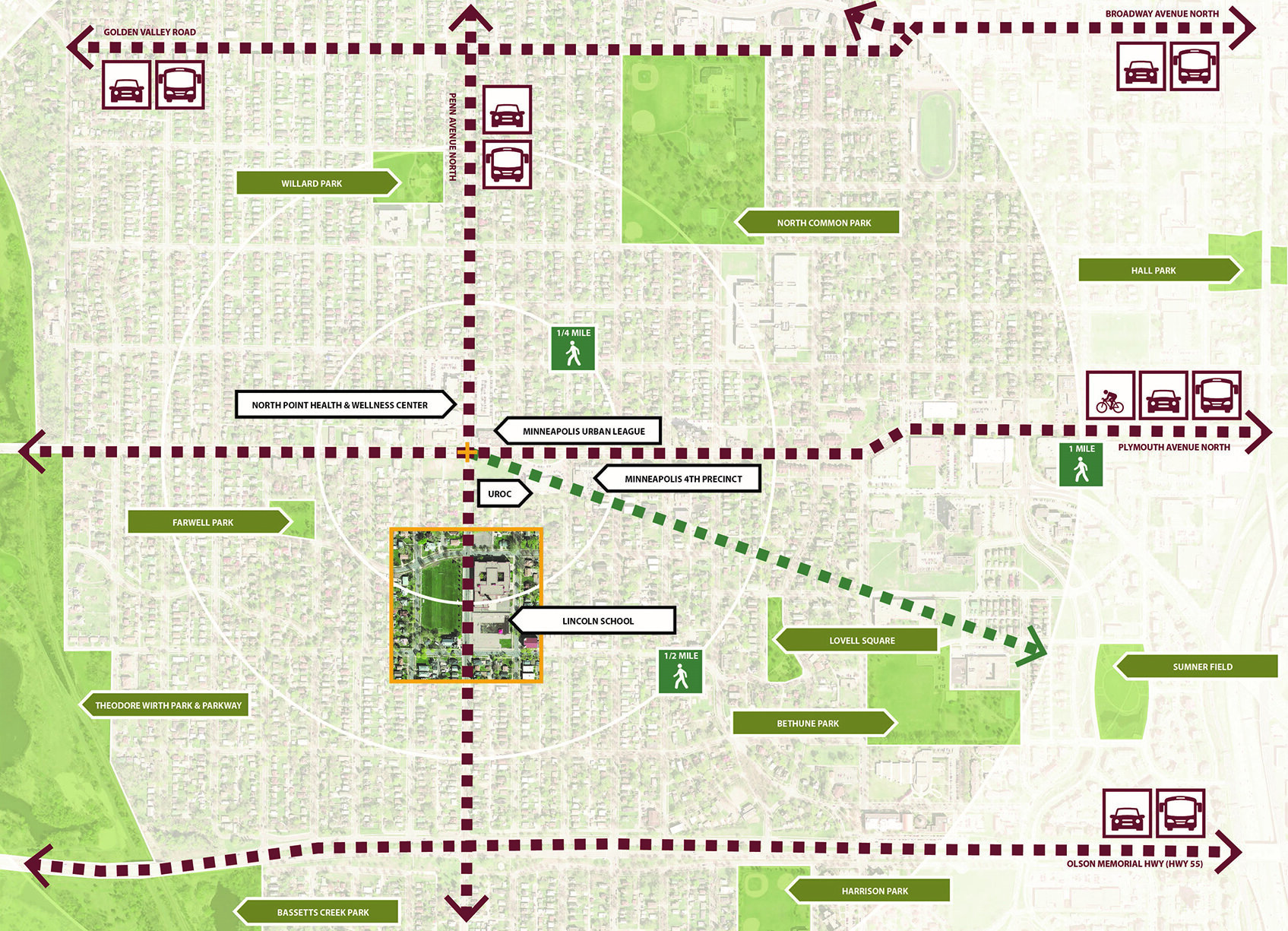LINCOLN SCHOOL PLAYGROUND RE-IMAGINING
Location: Minneapolis, Minnesota
Client: Lincoln Playground Leadership Team, Mississippi Watershed Management Organization (MWMO)
Status: Study Completed in 2017
Team: TEN x TEN, Bruce Jacobson (RLA), Metropolitan Design Center, Barr Engineering
Supported by the Center for Prevention at Blue Cross and Blue Shield of Minnesota (Blue Cross), we began an outreach initiative by creating a series of “pop-up” events to bring energy back to Lincoln Playground, where residents can interact with and begin envisioning a place of new investment and community improvement. Because of shifting school populations – from public school to charter school – the playground has deteriorated into little more than a community eyesore and is not an asset for local children or their families.
Formation of the Lincoln Playground Leadership Team: A Lincoln Playground improvement initiative has been in progress for several years, started by residents and block club leaders who were frustrated by the deterioration of the playground. An MWMO Planning Grant in fall of 2015 was a catalyst for the development of the Lincoln Playground Working Group and the groups “Ambassadors”, active participants in the community who were motivated to drive change. In the first quarter of 2016, the Working Group actively recruited area leaders to create a decision-making body, eventually coined the “Lincoln Playground Leadership Team.” The Leadership Team members have strong ties within North Minneapolis, many with specific connections to Lincoln school. They each bring expertise needed to help move the project forward and ensure it retains the character of their neighborhood and reflects the needs of the community. The formation of the Leadership Team was a key development overlapping with the Active Places Demonstration activities at the playground.
Guided by the Lincoln Playground Leadership Team, along with a group of determined residents and supporters, we cast a wide net of invitation and involvement. We believe these events resulted in improved health and wellness, enhanced the community’s sense of place, and encouraged economic development and overall livability. These events were undeniably successful in drawing local interest to the site, in showing students their play space matters, and in planting the seed for a future community space.










